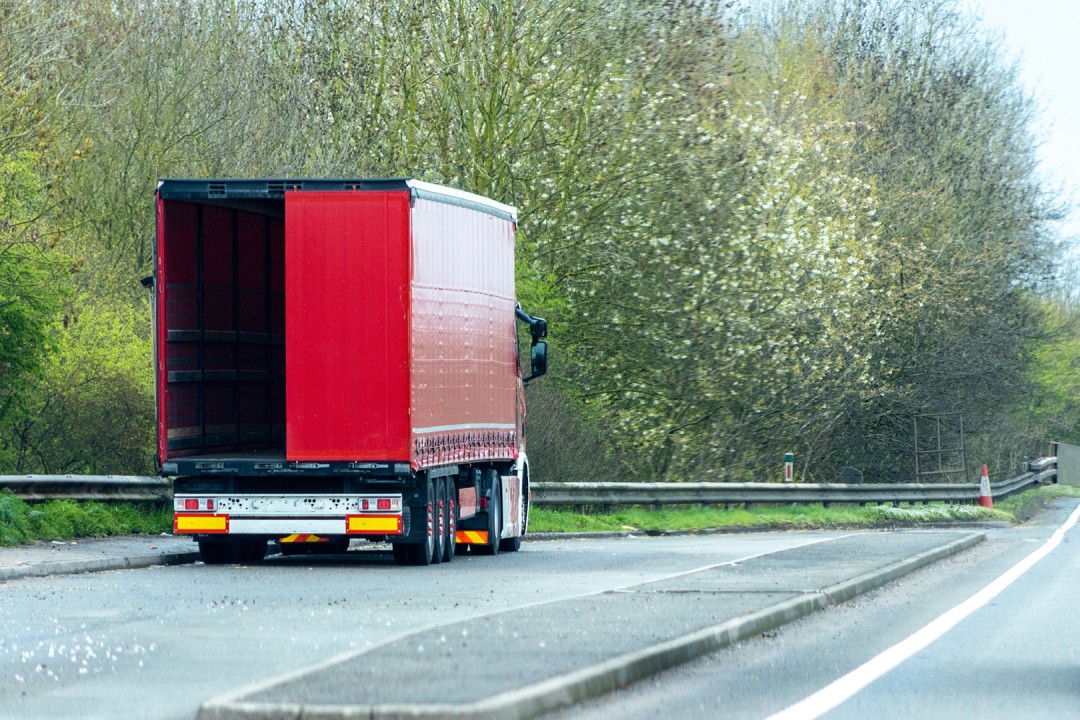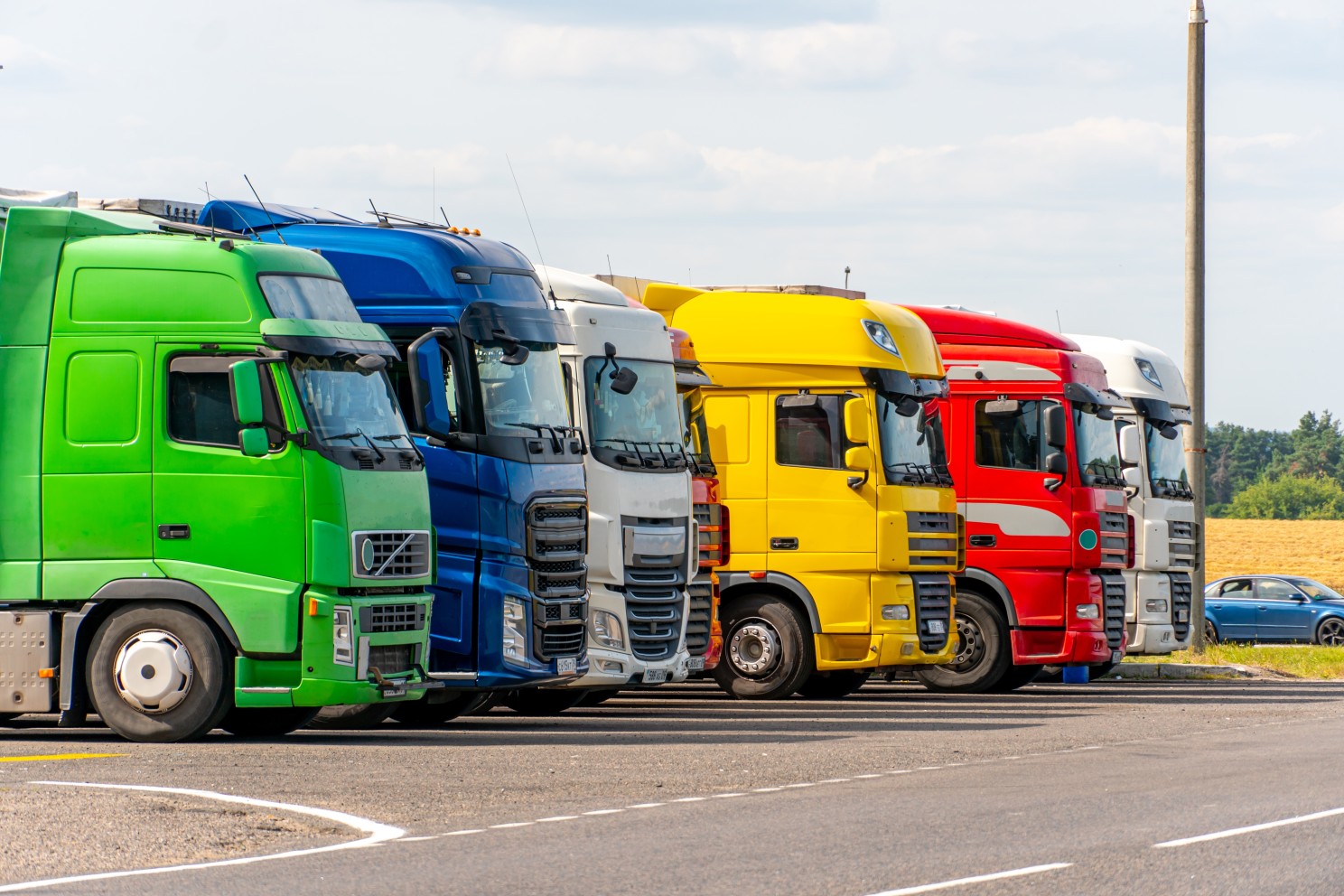
Susie Jones
Избират ли шофьорите паркингите пред бензиностанциите
Създаден: 19.08.2024
•
Актуализирано: 19.08.2024
През 2022 г. в Обединеното кралство са регистрирани над 5000 сигнала за престъпления, свързани с товарни превози, което е довело до загуби за около 66 милиона паунда. Увеличаването на престъпленията, свързани с товари, представлява критична заплаха за веригите за доставки, предприятията и потребителите - предизвиквайки значителна загриженост за работещите в сектора на товарните превози.
В доклад, публикуван от полицията на Кеймбриджшир, се посочва, че 46% от всички кражби на товари се извършват на улици и паркинги, а 27% - на бензиностанции. Независимо от това, социалните мрежи показват, че много шофьори продължават да паркират на уличните платна по различни причини.
Проблемите с паркирането на места за престой
За шофьорите паркирането през нощта в зона за престой често е най-простият и икономичен вариант. Той обаче има няколко недостатъка, които могат да окажат отрицателно въздействие върху психичното здраве и безопасността на водача.
Удобства - Шофьорите се нуждаят от повече удобства, като тоалетни, душове и храна. Липсата на чисти съоръжения може да увеличи дискомфорта и да окаже отрицателно въздействие върху съня, концентрацията и психичното здраве.
Безопасност на водачите - паркирането на място представлява допълнителен риск за безопасността на водачите. Проучване на АА установи, че две трети от фаталните инциденти с неподвижни превозни средства на двулентов път са станали на паркинги за отдих, като повече от половината от ударените превозни средства са били тежкотоварни.
Кражба на товари - в периода юни-юли 2023 г. в сектора е регистрирано 380% увеличение на кражбите на товари, което подчертава необходимостта от безопасни и сигурни паркинги. Тъй като опортюнистичните крадци се насочват към паркингите, шофьорите рискуват да загубят товара си, а автопарковете - милиони паунди.
Защо шофьорите паркират в пресечките
Въпреки рисковете, социалното проучване, проведено чрез Facebook, показва, че 70 % от шофьорите са по-малко склонни да изберат паркинг за камиони вместо място за престой поради няколко причини:
Сигурност
Отзивите в социалните медии сочат, че 43% от шофьорите на камиони предпочитат да не паркират на спирка за камиони или бензиностанция поради липсата на мерки за сигурност.
"Паркирам само в уличките или в индустриалните зони. Когато съм паркирал в сервизи/стопове за камиони, са ми рязали пердетата", заявява шофьорът на камион Люк.
Безопасността и сигурността на спирките за товарни автомобили в Обединеното кралство е гореща тема за обсъждане в сектора на товарните превози - шофьорите настояват за по-голяма подкрепа от страна на правителството за осигуряване на допълнителни съоръжения за сигурност. Според предишни отзиви шофьорите искат да видят, че таксата за тежкотоварни автомобили се инвестира в по-сигурни, хигиенични и достъпни паркинги.
В социалните медии 59% от шофьорите на камиони твърдят, че в Обединеното кралство липсват достатъчно безопасни и сигурни спирки за камиони в сравнение с Европа. Мнение, подкрепено от обратната връзка от SNAP's Truck Park Tour, където 31% от европейските шофьори заявяват, че имат най-голяма полза от достъпа до ексклузивни, сигурни места на SNAP. Организацията за сигурност TAPA е широко призната в Европа - много обекти притежават сертификати от ниво 1, 2 или 3.
За разлика от тях в Обединеното кралство има само два обекта, които притежават сертификат TAPA, като акредитирането на обектите се извършва от оторизирани одитори, обучени по SNAP PSR на ниво 3. Formula Services и The Red Lion притежават сертификат от ниво 3, като в The Red Lion е докладвано едно нарушение, а във Formula Services - нито едно, въпреки че се намира в район с висока престъпност.
Маркус Принц, старши мениджър "Стандарти, обучение и сертифициране" в TAPA, обяснява: "Напълно подкрепяме всички дейности за осигуряване на ефективна и безопасна инфраструктура за паркиране на камиони и подобряване на безопасността на водачите на камиони, превозните средства и товарите. Като предоставяме отворена екосистема за техническо и икономическо оптимизиране на сигурното паркиране на камиони, вярваме, че преходът към сигурно паркиране на камиони може да бъде ускорен."
Нежелание от страна на компанията
30 % от шофьорите заявяват, че техните компании не желаят да плащат за спирки за камиони или бензиностанции. Един шофьор обяснява:
"За съжаление все по-малко компании плащат за нощен паркинг, обектите остават отворени с цената на всичко, съкращават персонал, за да покрият сметките си, а приходите от паркинги намаляват."
Спирките за камиони са с максимален капацитет
"Можете да разберете кои спирки имат охрана, тъй като са пълни до 18:00 ч."
70 % от шофьорите изразяват недоволството си от това, че охраняемите спирки за камиони са с максимален капацитет и не им остава друг избор, освен да паркират в престой. Отзивите от обиколката на паркингите за камиони са сходни - много от тях изразяват загрижеността си, че местата в Обединеното кралство са пълни преди пристигането.
Данните от проучването на TfL за паркирането на камиони през 2022 г. сочат, че въпреки 12% увеличение на капацитета на място в периода 2017-2022 г., той не е достатъчен, за да поеме 21% увеличение на превозните средства през същия период.

Намаляване на паркирането през нощта в пресечките
Държавно финансиране
18% от шофьорите искат да получат повече средства от правителството в подкрепа на инсталациите за сигурност. През септември 2023 г. Министерството на транспорта отпусна 8 млн. паунда на 39 крайпътни съоръжения в Англия за подобряване на съоръженията и сигурността. Екипът за достъп и сигурност на SNAP започва да подкрепя компаниите, които са си осигурили финансиране, като предприема действия за подобренията им. Допълнително финансиране в размер до 100 млн. паунда е на разположение до 2025 г. в рамките на правителствената схема за съфинансиране.
Инсталации за сигурност
За да осигурят безопасна и сигурна зона за шофьорите на камиони, спирките за камиони могат да инвестират в надеждни инсталации за сигурност - продукти като видеонаблюдение, ANPR, домофон, бариери и киоски повишават сигурността на обекта и възпират престъпната дейност. SNAP Access & Security съчетава персонализирани продукти за сигурност и пазарен опит, за да защити хората, превозните средства и съдържанието на спирките за камиони.
Могат ли шофьорите на камиони да спят край пътя в Обединеното кралство?
От 1 ноември 2017 г. DVSA въведе нови правила и разпоредби по отношение на почивката на водачите на превозни средства на места като жилищни райони и преспи. Шофьорите могат да бъдат глобени с до 300 GBP, ако прекарат почивката си в престой или край пътя.
Как шофьорите на камиони остават будни, докато шофират?
Шофьорите на камиони трябва да спазват правилата за прекъсване на тахографа за своя безопасност и за безопасността на всички останали участници в движението. Целта на тахографа е да предотврати умората на водачите и да гарантира, че водачите и работодателите спазват правилата.
Въпреки това предотвратяването на отегчението и умората на пътя е предизвикателство за много шофьори и може да повлияе на тяхното благосъстояние. Повечето шофьори предпочитат да слушат музика и подкасти по време на път и се радват на социално взаимодействие с други шофьори на спирките за камиони и бензиностанциите.
Разрешено ли е на шофьорите на камиони да превозват пътници в Обединеното кралство?
Средностатистическият шофьор на камион прекарва около 12 часа на ден зад волана. За да се преборят със самотата и скуката, шофьорите могат да превозват пътници, ако спазват конкретни правила, посочени от FMSCA. Шофьорите трябва да получат писмено разрешение от своята компания, като подадат заявление за превоз на пътници - в това заявление трябва да се посочат продължителността на пътуването и датите.
Общите изисквания са следните: - Пътниците не трябва да са бременни.
Те не трябва да страдат от тежки или хронични заболявания.
Те трябва да са на 10 или повече години.
Необходима е здравна застраховка.



